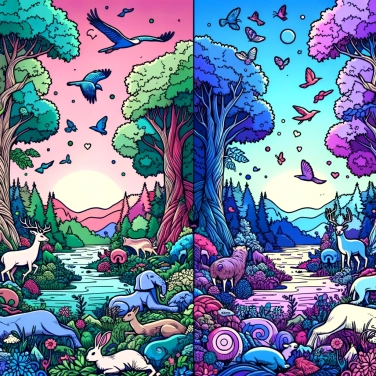Dogs wag their tails when they are happy because it is linked to the expression of their emotions and well-being. This movement often reflects excitement and contentment.

When a dog is happy or excited, it naturally wags its tail. This movement is explained by a fairly simple non-verbal communication: the tail expresses what the dog feels inside. When it wags widely and quickly, often accompanied by a moving rear end, it clearly indicates intense joy, satisfaction, or affection towards the person or animal in front of it. Conversely, a tense, raised, and still tail does not send the same signal and rather suggests vigilance or stress. If it is relaxed, low, and wagging in a relaxed manner, it generally shows calm and relaxation, or even slight satisfaction. In short, a happy dog's tail is a bit like its smile: the faster it wags, the more delighted it is to see you.
In dogs, it is mainly the limbic system (a set of brain structures related to emotions) that activates when they feel happiness. In this area, certain parts like the amygdala and the nucleus accumbens react strongly by releasing chemicals that induce pleasure and a pleasant sensation, such as dopamine or serotonin. This chemical cocktail then stimulates other brain areas and instructs the body to react physically to happiness, which is often expressed by a joyful wagging of the tail. For example, when a dog sees its owner come home, its brain recognizes the pleasant situation, releases these substances, and voilà, the tail starts wagging on its own (or almost!).
When a dog experiences a pleasant emotion, its brain releases chemical substances called neurotransmitters, such as dopamine and serotonin, associated with pleasure. These substances trigger signals to the muscular system through the peripheral nerves, causing the famous tail wagging. This reaction primarily involves the spinal cord, which acts as a relay quickly transmitting information to the muscles located at the base of the tail. Since the muscles around the tail are directly connected to this emotional-sensitive nerve network, their activation is automatic and directly reflects the dog's emotional state. It is therefore a well-tuned biological system that makes the tail move as soon as the dog feels happy!
Scientists have observed that the direction of wagging is important: a dog that wags more to the right indicates a positive state of excitement and happiness, while a tilt to the left signals stress or anxiety. Additionally, speed plays a crucial role. Wide and fast movements generally indicate intense pleasure or great joy, while light and slower movements often show caution or hesitation. Through brain imaging like MRI, studies have confirmed that when dogs see someone they like, areas of their brain linked to positive emotions activate, directly triggering that well-known joyful wagging reflex.
Researchers have discovered that dogs are capable of recognizing human emotions through our facial expressions and the tone of our voice, which explains why their joy increases when they observe our positive behavior towards them.
Dogs are not born immediately able to wag their tails to express their emotions. Puppies typically start using this movement around 3 to 4 weeks of age when they begin their social interactions with their siblings and mother.
The rapid movement of a dog's tail also releases its own unique scent, coming from the glands located near the base of its tail. This subtle odor helps to easily convey chemical and emotional signals to other nearby dogs.
Some dog breeds, such as the Welsh Corgi or the Boston Terrier, may be born with a short or even absent tail. Despite this, they find other expressive ways, through their ears, face, or posture, to show their enthusiasm or happiness.
No, other body signs indicate happiness in a dog, such as an open mouth (as if smiling), a relaxed gaze, ears slightly pinned back, and a relaxed body posture.
No, the movement of the tail can vary depending on the breed, the individual, and the dog's personality. Some dogs will wag their tails vigorously to express their joy, while others will have a more subtle or quick movement.
The frequency of tail movement can be influenced by the emotional intensity felt by the dog. A very strong feeling of happiness or excitement often generates rapid and vigorous tail movements.
Not necessarily. A calm or relaxed dog can also keep its tail still. The absence of movement may simply indicate neutrality or emotional serenity, and not necessarily a negative feeling.
No, dogs use tail movements to express various feelings, including joy, excitement, nervousness, or submission. The direction, amplitude, and speed of the movements can vary depending on their emotional state.

No one has answered this quiz yet, be the first!' :-)
Question 1/5